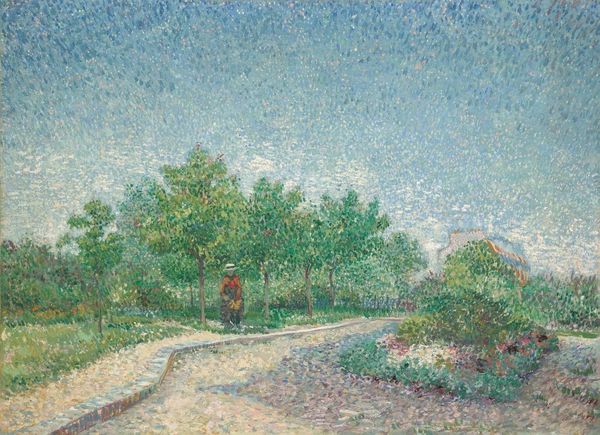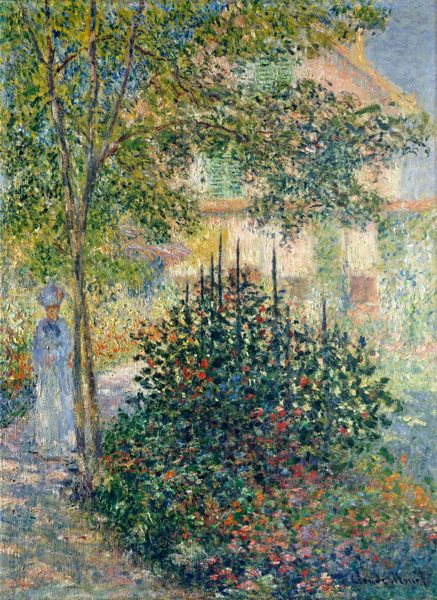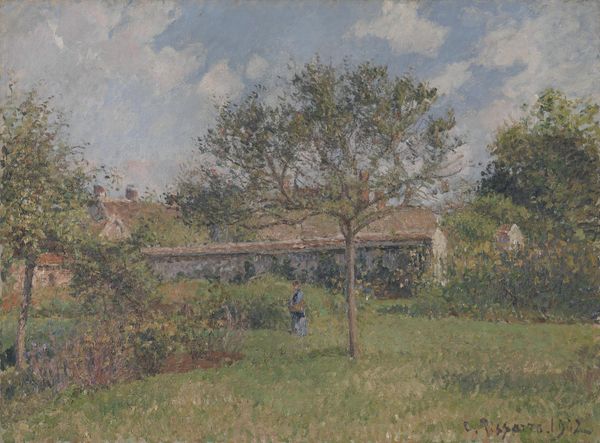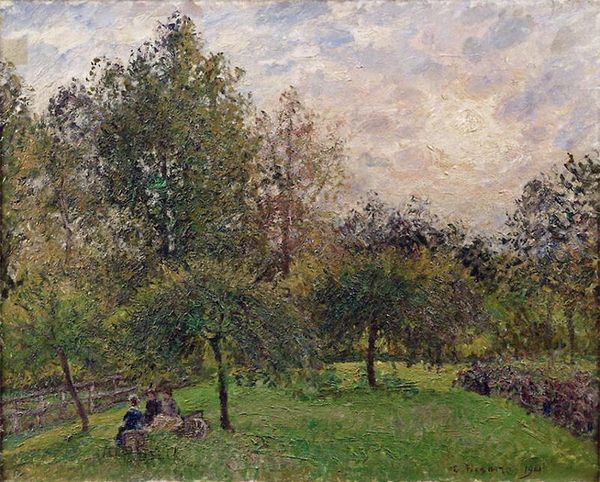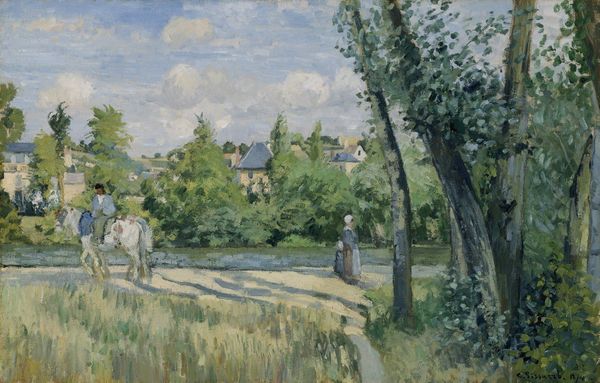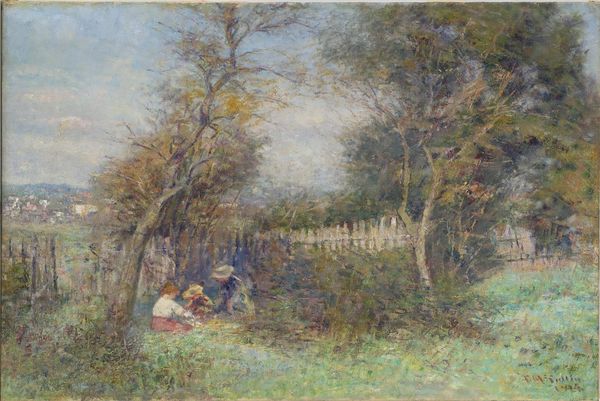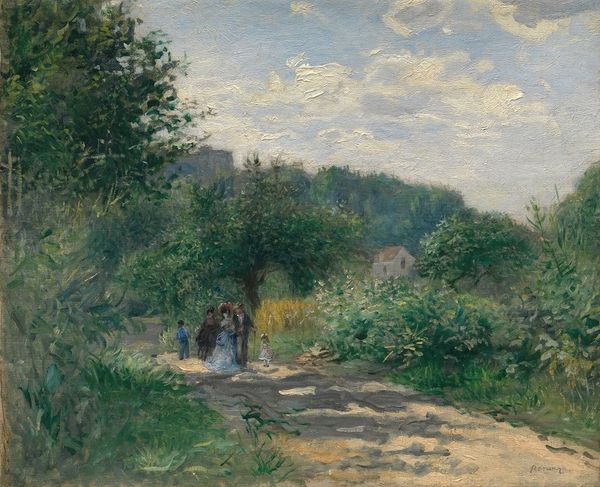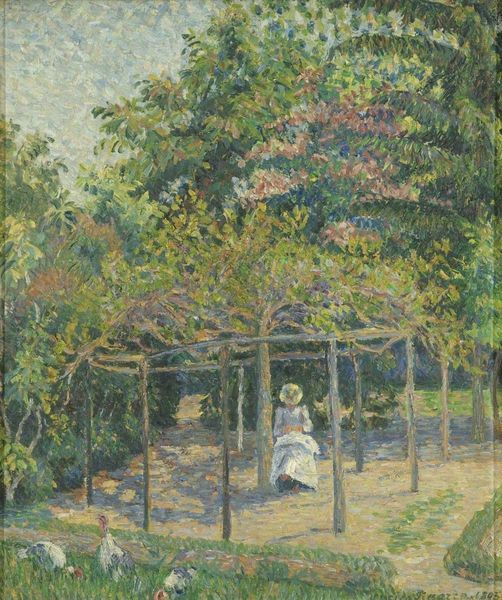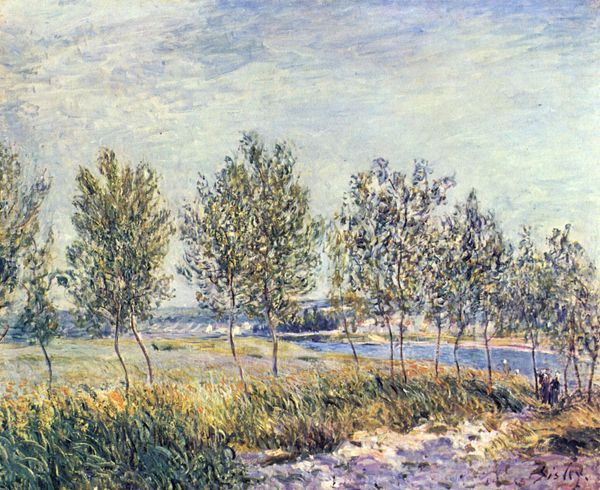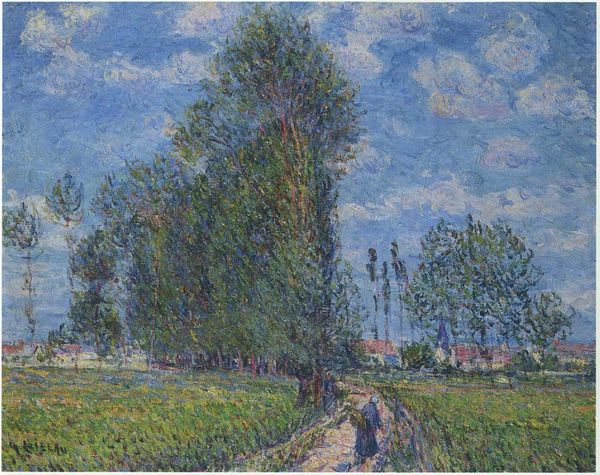
painting, oil-paint
#
portrait
#
painting
#
impressionism
#
oil-paint
#
landscape
#
oil painting
#
cityscape
#
genre-painting
#
post-impressionism
Copyright: Public Domain: Artvee
Editor: So, we're looking at Van Gogh's "Garden in Montmartre with Lovers," painted in 1887, using oil paint. It’s quite serene, almost dreamlike with its hazy brushstrokes. What do you see in terms of how Van Gogh crafted this scene? Curator: This piece intrigues me because of the visible labor and deliberate application of material. Observe the density of the paint; the materiality becomes almost sculptural. The short, choppy brushstrokes are not merely descriptive, but active in building form. It compels us to consider: How does the application of the oil paint itself construct not only the scene, but also our understanding of it? Consider the class and gender dynamics embedded within a ‘lovers’ scene. Who consumes art and how labor relations play into that process are key for me here. Editor: That’s a good point. The thick paint almost obscures detail, doesn't it? It shifts the focus from precise representation to something more about the process, I guess? Curator: Exactly! Think about what he's doing with industrial production – these are tube paints, available to a wider range of artists because of industrial manufacturing. So, a move away from academic refinement isn't just aesthetic, but also inherently tied to the means of art production becoming democratized at this moment in time, allowing someone like Van Gogh to practice his method. Does that resonate for you? Editor: It does! Seeing it that way gives me a totally different appreciation. The subject matter isn't just pretty scenery, it's reflective of shifting modes of making art. Thanks. Curator: Precisely. And, that shift had profound consequences on art as we know it. Appreciating this helps unpack even today's landscape.
Comments
No comments
Be the first to comment and join the conversation on the ultimate creative platform.

